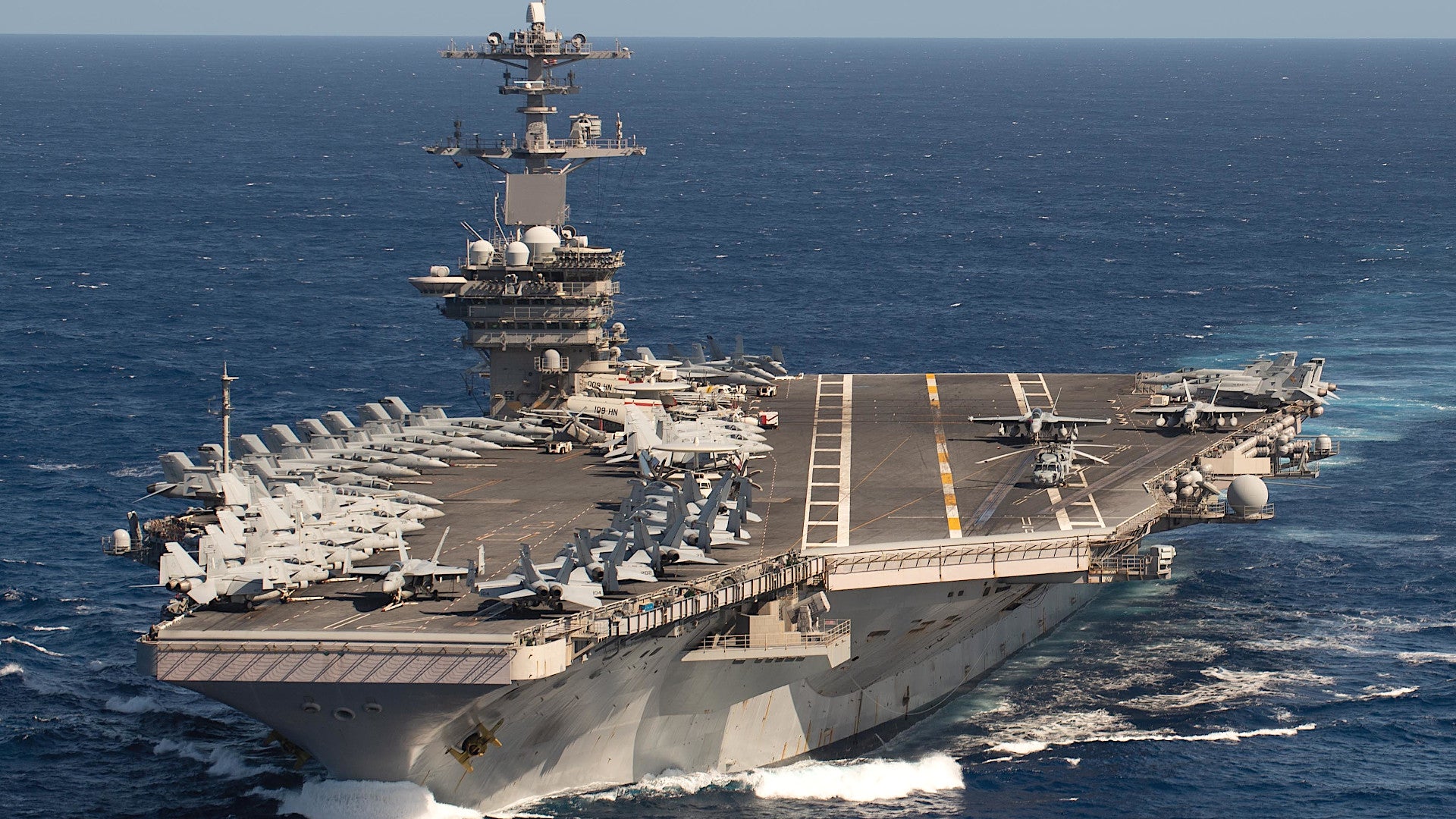The Nimitz class aircraft carrier USS Theodore Roosevelt has left port ahead of its second operational deployment this year. The crew of its sister ship USS Dwight D. Eisenhower is also now preparing to head out again for the second time in the space of 12 months. These so-called “double pump” deployments come amid a surge in demand for aircraft carriers to support U.S. military operations around the world, but at a time when a significant number of America’s flattops are tied up undergoing maintenance and major overhauls.
Ship spotters caught Theodore Roosevelt, as well as some of her escorts, leaving San Diego on Dec. 7, 2020. The carrier only returned to its homeport from its last deployment in July.

While this may seem like a relatively long span between deployments, it is short enough that the ship’s crew remains largely certified to operate from its last cruise and will be able to skip a slate of exercises typically required before a carrier can head out again. Personnel entered a two-week quarantine period in November, a step to prevent potential outbreaks of COVID-19 on the ship, as happened aboard Theodore Roosevelt earlier this year, and are now set to conduct a sustainment exercise before beginning their next operational cruise, according to USNI News.
“The Theodore Roosevelt Carrier Strike Group [TRCSG] is currently underway conducting operations in U.S. Third Fleet [area of responsibility],” Navy Commander Sean Robertson said in a statement to USNI News. “The strike group is a combat-ready national asset capable of both deterrence and offensive strike that provides our national command authority with flexible options, all domain access, and a visible forward presence.”
“TRCSG has maintained its readiness since it returned from deployment in July,” he added. “It continues to train and perform together as a unit in order to be ready for any, and all, challenges.”
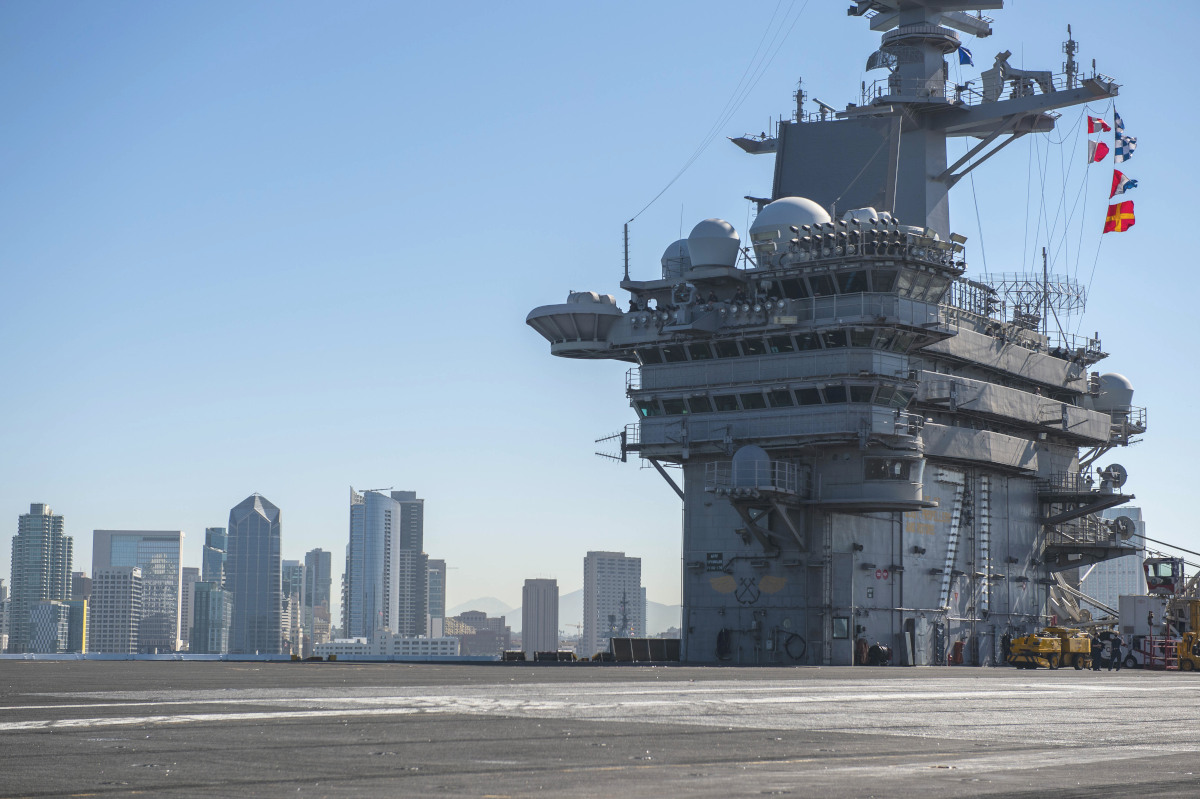
Theodore Roosevelt‘s first deployment this year, which began in January, was hardly uneventful. As already noted, the ship was stricken by a major outbreak of COVID-19 among its crew, which killed one sailor and sickened hundreds more, forcing it to spend approximately two months in port in Guam. The situation eventually morphed into a major scandal, starting with the controversial decision to fire the ship’s then-commanding officer, Captain Brett Crozier, who’s warnings about the risks the outbreak posed to his crew had leaked to the press, and ultimately leading to the resignation of Acting Secretary of the Navy Thomas Modly.
The crew of Eisenhower, which is homeported in Norfolk, Virginia, on the other side of the country and is presently sailing in the Atlantic, is also preparing for another deployment in the space of 12 months. That carrier left for its last cruise in January and returned home in August after primarily operating in the Middle East. The COVID-19 pandemic meant that the crew had spent seven months at sea without a port visit.
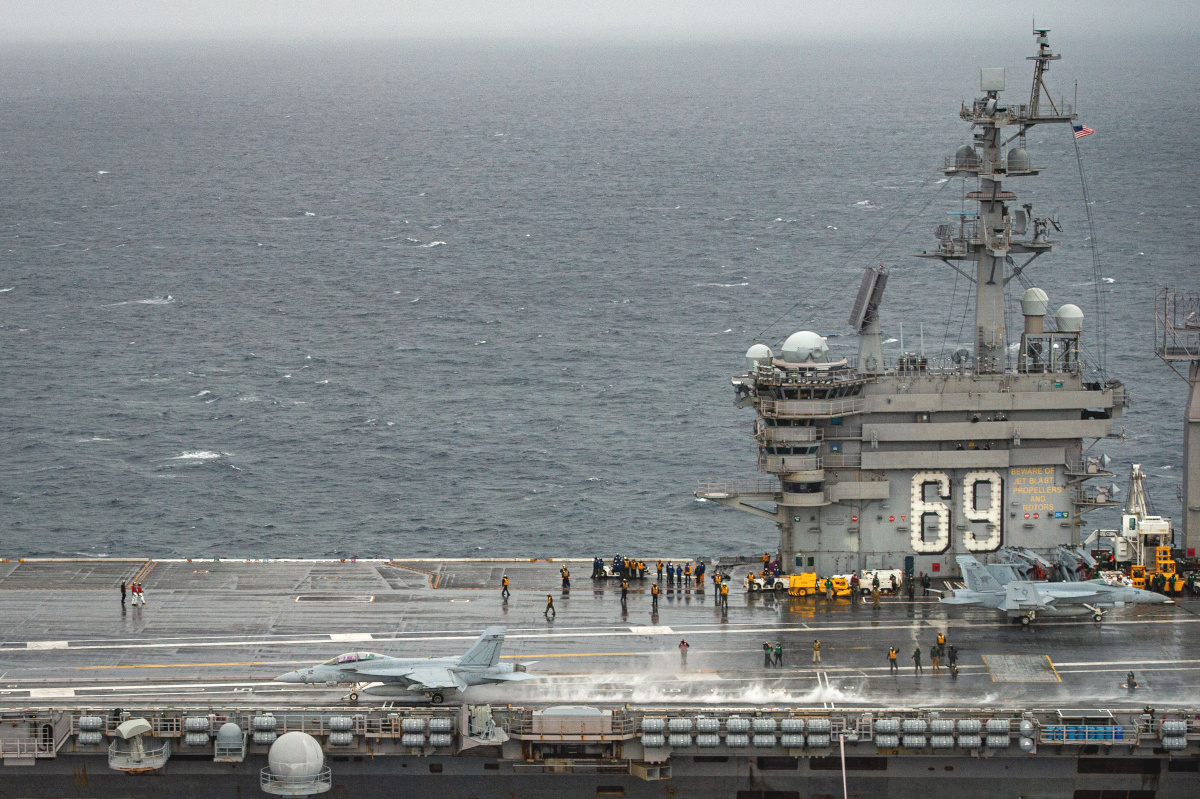
The Navy has, so far, declined to say where either carrier, and their associated strikes groups, might be headed for their next deployments. However, it seems very likely that Theodore Roosevelt will return to the Pacific region, where the Navy, as well as other branches of the U.S. military, has been stepping up exercises and other activities as a challenge to expanding Chinese movements.
There has been a noticeably public uptick in the U.S. military presence around Taiwan, as well as on the island, in recent months as friction has grown between the government in Beijing and authorities in Taipei. There has also been an increase in American military activities in and around the disputed South China Sea. In July, the Navy notably sent two aircraft carrier strike groups together into that body of water for the first time in six years.
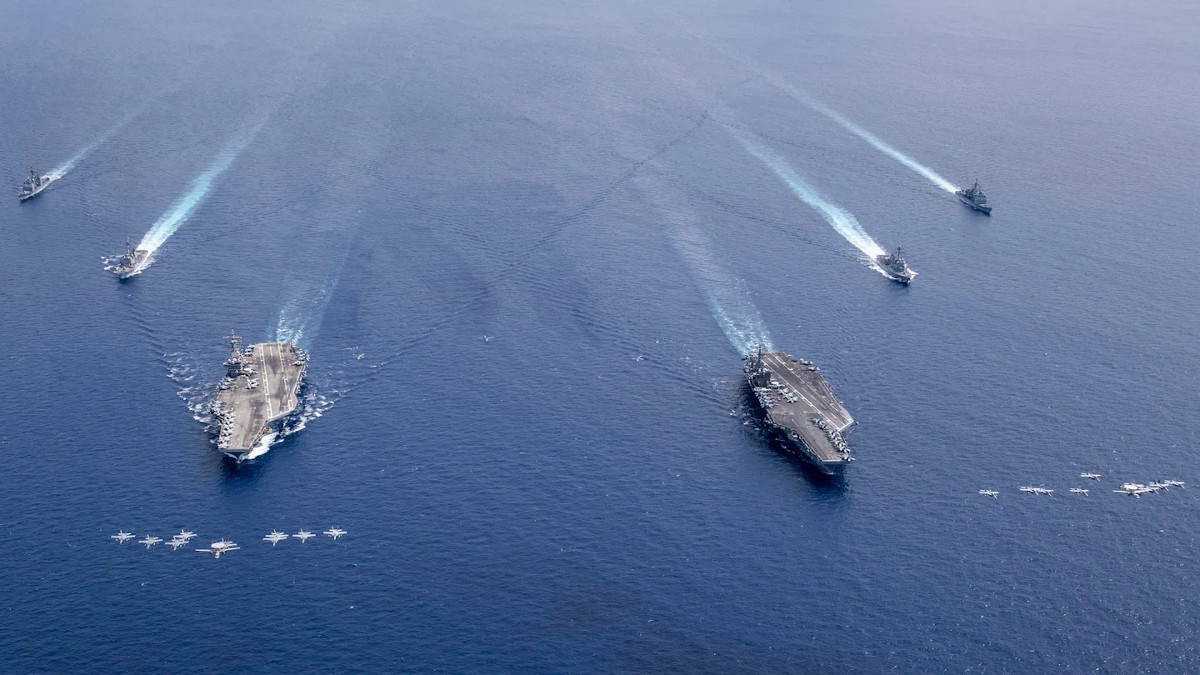
The first-in-class USS Nimitz had relieved Eisenhower in the Middle East in August and their two may be about to swap places again in the near future. As of Dec. 6, that carrier was operating in the North Arabian Sea.
The flattop and other elements of its carrier strike group had sailed to the Indian Ocean in November for the latest iteration of the Malabar naval exercise with India, Australia, and Japan, but had returned to the Middle East on Nov. 25, ostensibly to be in a position to better support planned drawdowns of U.S. forces in both Iraq and Afghanistan, redeployments that are still in progress. That movement also came just days before the assassination of top Iranian nuclear scientist Mohsen Fakhrizadeh.
Since returning to the region, Nimitz has remained outside of the Persian Gulf, as U.S. carriers typically do due to the increased threats that they face from Iran in the tight confines of that body of water. Warships can only sail in and out of the area via the narrow Strait of Hormuz, which carries its own risks. Iranian forces have also outright attacked American unmanned aircraft flying over the Gulf of Oman, which lies on the other side of the Strait, on more than one occasion in 2019, succeeding in shooting down a Navy RQ-4A, as well.

“We have achieved an uneasy deterrence [with Iran]. That uneasy deterrence is exacerbated by world events and by events along the way,” Navy Vice Admiral Sam Paparo, head of U.S. 5th Fleet, which is based in Bahrain and oversees Navy activities in the Middle East, said during a talk on Dec. 6. “But I have found Iranian activity at sea to be cautious and circumspect and respectful, to not risk unnecessary miscalculation or escalation at sea.”
“We are happy that the other party has got the message and made its behavior more respectful,” Iranian Foreign Ministry spokesperson Saeed Khatibzadeh told reporters in response to Paparo’s remarks the next day.
Wherever the two carriers may be headed, their deployments so soon after their last cruises underscores the demand for American aircraft carriers and the current limited availability of Navy flattops. The USS Carl Vinson is in the process of working up for its own 2021 cruise, which is set to be the first where the embarked air wing will be equipped with F-35C Joint Strike Fighters and CMV-22B Osprey tilt-rotors.

Of the Navy’s remaining six Nimitz class aircraft carriers, four – USS Abraham Lincoln, USS George H.W. Bush, USS Harry S. Truman, and USS Ronald Reagan – are undergoing scheduled maintenance. It’s also worth noting that Reagan is forward-deployed in Japan and has its own distinct schedule of deployments and maintenance.
The work on Truman follows that carrier’s own double-pump deployment period. In 2019, the Pentagon had briefly considered retiring that ship early, as well.
The USS George Washington is in the middle of a four-year-long Refueling and Complex Overhaul (RCOH), which involves changing out the nuclear fuel in the ship’s reactors, as well as performing other substantial maintenance and upgrade work. The USS John C. Stennis is in preparing for the start of its RCOH next year.
The Navy’s last carrier, the first-in-class USS Gerald R. Ford, remains effectively unsuitable for operational deployments as work continues to make key systems on that ship fully functional. It has been largely relegated to training duties in the meantime.

Even as the number of available carriers has dropped, the total amount of time the remaining flattops have been spending at sea has increased. USNI News calculated that the service’s carriers had spent 855 days at sea, collectively, between January and October of this year. This was already 258 days more than the collective at-sea time for the service’s carrier fleets in all of 2019, representing a 40 percent year-on-year increase.
All of this, together with the COVID-19 pandemic, has put immense strain on the four currently available Nimitz class carriers. As a result, double-pump deployments, which Defense News‘ David Larter described back in September as “a break-glass-in-case-of-emergency maneuver that puts enormous strain on the crew and the equipment,” have become increasingly the norm.
This also notably comes two years after then-Secretary of Defense Mattis announced plans to shake up carrier deployments to both make them less predictable, and therefore more difficult for potential adversaries to plan around, and shorter overall. “They’ll be home at the end of a 90-day deployment. They will not have spent eight months at sea, and we are going to have a force more ready to surge and deal with the high-end warfare as a result, without breaking the families, the maintenance cycles – we’ll actually enhance the training time,” he declared to members of Congress in 2018.
This, of course, has not come to pass. The Navy’s fleets, overall, have already been under increasing operational strain in the past two decades, due to a number of factors, including significant maintenance backlogs, which have only been exacerbated by the COVID-19 pandemic. The threat of outbreaks has also forced ships and their crews to stay at sea longer, with very visible impacts in the form of often rusty vessels returning home after protracted deployments. Multiple news reports have made clear that morale is suffering, too.
We at The War Zone
have already explored in depth in the past how, even before COVID-19 further complicated the situation, the Navy’s fleets, along with their crews, were being progressively worn down and that it was being faced with ever-diminishing returns that would have cascading impacts across the service. The additional strains from double-pump deployments only add to the figurative and literal bills that the Navy will have to pay down the road in order to get out of this increasingly worrisome cycle.
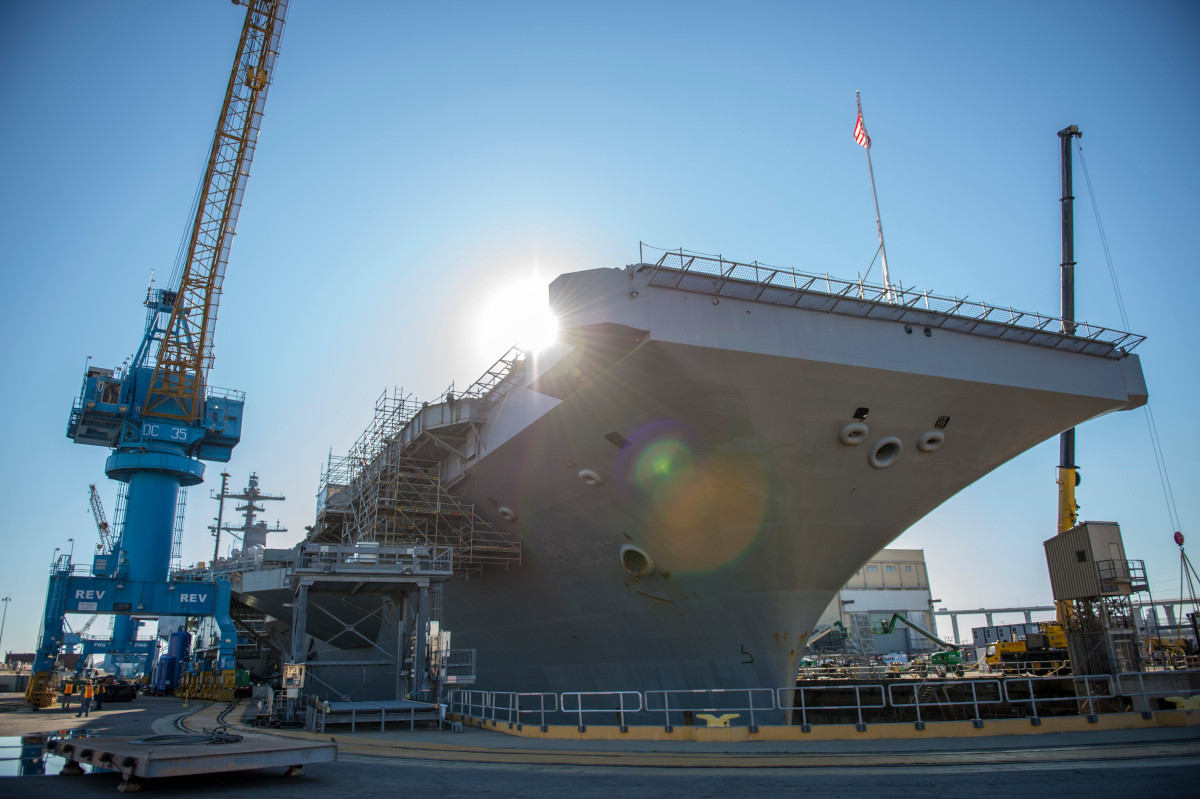
As it stands now, the Navy is also trying to balance its current operational needs with a desire to significantly grow the overall size of its fleets, to a total of 500 ships or more, in the next 25 years. This includes calls for light aircraft carriers, an idea the service has explored, but passed on in the past. There has also been talk of repurposing amphibious assault ships for a similar role, to help provide additional carrier capacity, something the Navy, together with the U.S. Marine Corps, is already experimenting with.
Formal approval of this force structure plan, presently known as Battle Force 2045, which you can read about in more detail in this past War Zone piece, had already been pushed back and now appears to be on hold until President-Elect Joe Biden and his new administration takes office next year. How the Biden Administration may seek to tackle the existing strains on the Navy’s fleets, including on its carriers, remains to be seen.
In the meantime, with the demand for these ships showing no signs of slowing down, the flattops the service does have available look set to continue pulling multiple deployments in relatively short time spans.
Contact the author: joe@thedrive.com
